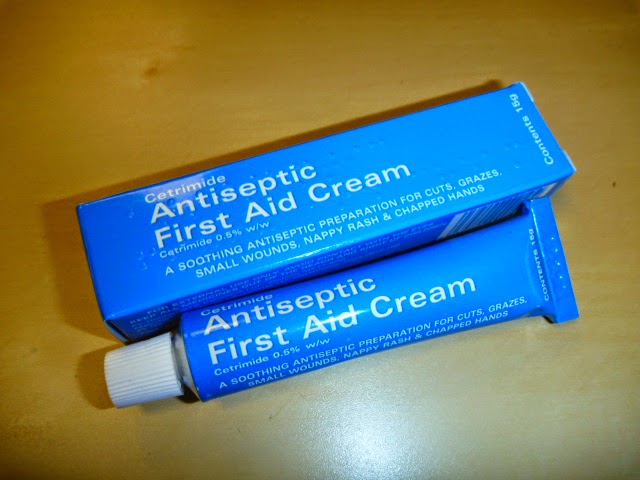Contents of a General First Aid Kit
Having a well stocked, in date First Aid kit is vital to ensuring you have the right bits to help treat someone involved in an accident. There are many First Aid kits on the market, ranging from very cheap, very low quality, pretty useless £1 specials, through to medical kits that cost several hundreds of pounds.
One option is to build your own First Aid kit, and with the right contents, you too can have a First Aid kit for every eventuality.
Take a look at one of our basic First Aid Kits as shown to students on our courses:
In a Bag, to Keep it together, and dry! All contents are kept in a zip lock bag. This ensures they are kept dry, and together, all in one place!
Antiseptic Cream. After cleaning a wound with water, this is good to prevent infection, keeping the wound clean. If this First Aid kit is used to treat others, or someone in the family is sensitive to the ingredients to the cream - it should be excluded.
Wound and Dressing closures. Washproof plasters to cover small cuts, Steri-Strips to close deeper wounds, safety pins and micropore tape to hold dressings fast in place.
Triangular bandages are great, and so versatile! You can make a head bandage, or sling from one! But, with slings, be careful with the paper type of bandage, they aren't so strong, so a fabric type may be better!
Face shield. Vital to prevent cross contamination when delivering mouth to mouth resuscitation (Rescue Breaths) to a casualty. We ensure we have these in our First Aid Kits, as well as on keyrings with our keys. One is always close to hand!
Gloves. Gloves are really important to prevent cross infection in both directions. Blood and other body fluids generally isn't the most pleasant of things to be in contact with, and more so, can contain some pretty nasty stuff such as viruses. Gloves are a quick and easy way to keep your hands free from all this whilst you treat a casualty.
Wound cleansing wipes. Alcohol Free. Great for cleaning a wound when away from water. You can gently, and under your own control, clean around a wound. Alcohol does have great cleaning properties, but when applied to a wound can hurt really badly, and also, can cause a reaction with a casualty. Sterile Water, as found on these wipes, will do just fine.
Assorted Dressings, Bandages, and pads. A dressing is often a bandage with a pad, whereas a bandage is a long piece of material, often woven for strength. There are many dressings / bandages, and each has it's own use. A Crepe bandage for example (Top middle) is elasticated, and this allows for swelling of the injured part, without cutting off circulation (Big problem). It's commonly used on joints, whereas other dressings can be used alone, and then bandaged over to prevent blood seepage.
Tough scissors & Tweezers. A tough pair of scissors helps cut through clothing and shoe laces etc. Tweezers are so important for removing small splinters and the such - But be aware, we don't remove bits of glass, or branches from people. That foreign object may be plugging a hole where without it's presence, a whole load of blood may flow out, and we really don't want that!
Other items for a First Aid kit may include a foil blanket (Mixed reviews on these), Sterile water (Eye wash) as well as a First Aid Booklet to help guide you in an Emergency.
If you're in the car, house, or office, extra levels of preparedness are required, and you will need to think about every potential incident, then aim off for it.
All the gear is great, but, without adequate training, it may be of little or no use in an Emergency, so, consider going on a First Aid Course.
Centric runs such courses for business and private groups alike. Check us out, we're here to help!









No comments:
Post a Comment